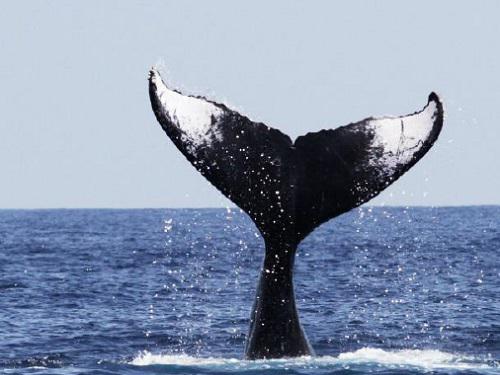Jo Marie Acebes
Other projects
9 May 2014
Conservation of a Humpback Whale Winter Breeding Ground in Northern Luzon, Philippines
29 Mar 2016
Ecosystem-Based Management of a Humpback Whale Winter Breeding Ground in the Philippines
7 Dec 2018
Conservation of the Babuyan Marine Corridor: The Only Breeding Ground of Humpback Whales in the Philippines
The project aims to monitor the humpback whale population in the area, enhance the environmental education outreach campaign and provide technical support to local stakeholders for the conservation of whales in the Babuyan Islands.

Commonly encountered melon-headed whales in the Babuyan Islands.
The Babuyan Islands is the only known humpback whale breeding ground in the Philippines and its significance as a breeding destination for humpbacks in the western North Pacific has been previously underestimated. Recent fluke photographic matches of individual whales between the Philippines and feeding grounds in Russia and further links with other breeding grounds in the western North Pacific presents increasing evidence that the Philippines may be part of the hypothesized “missing” breeding ground for North Pacific humpback whales. This project will build on earlier research and conservation initiatives. The project will continue to monitor the population of humpback whales in the Babuyan Islands in order to expand the Philippine humpback fluke catalogue and work towards estimating the abundance of the population wintering in this region. We will further substantiate links with other populations in the western North Pacific through increased effort and further comparisons of fluke photos and song recordings with groups from Russia, Japan and Hawaii. Boat-based surveys will allow us to monitor the status of cetaceans in this area by documenting species occurrence, distribution, and cetacean-fishery interactions.

Humpback fluke 2013.
Increasing pressure on this highly diverse marine ecosystem is alarming with signs of decreasing fish stocks due to environmental degradation from years of destructive and unsustainable fishing practices. With increased ship traffic and higher fishing boat density (i.e. long-lines and gill nets) direct and indirect threats to cetaceans have also become apparent. However, the receptiveness of local communities and their willingness to participate in project initiatives is very encouraging and presents an opportunity to further conservation initiatives. Hence, together with the local community, the project will promote and strengthen the proposed Marine Protected and Humpback Whale Conservation Area in Camiguin Island through the cetacean data and educational outreach efforts contributed by our work. The technical support provided by the Project will also enhance the capacity of local stakeholders in implementing and managing the marine tourism plan for the island. Our work will enhance the environmental education and awareness campaign established in previous years at both local and national levels by expanding our target area and audience coverage and using various types of educational materials.